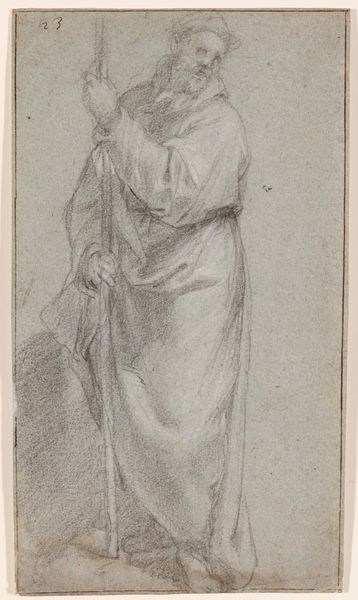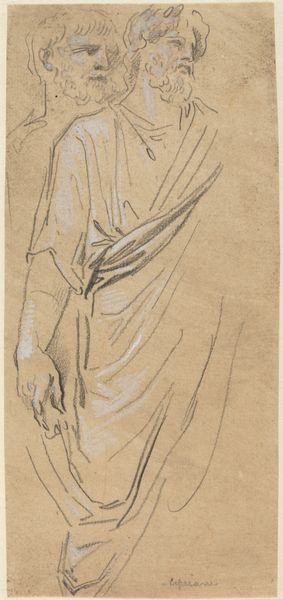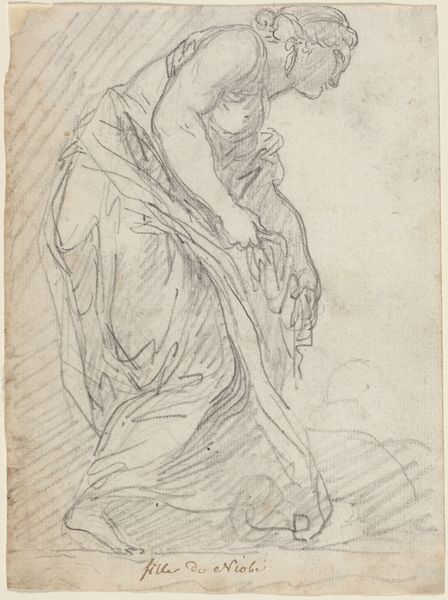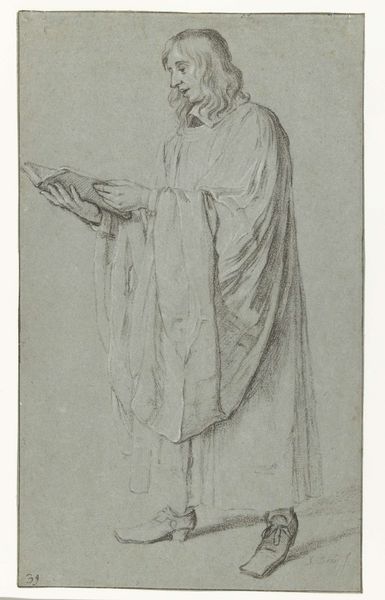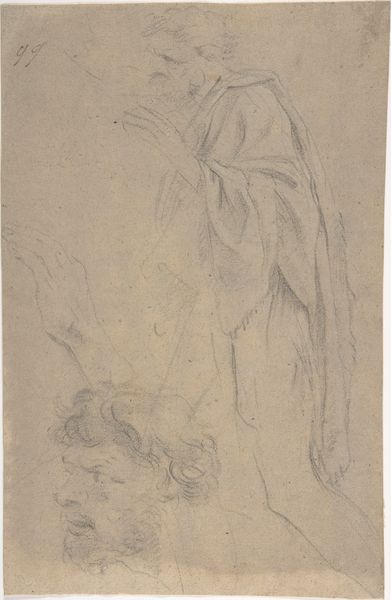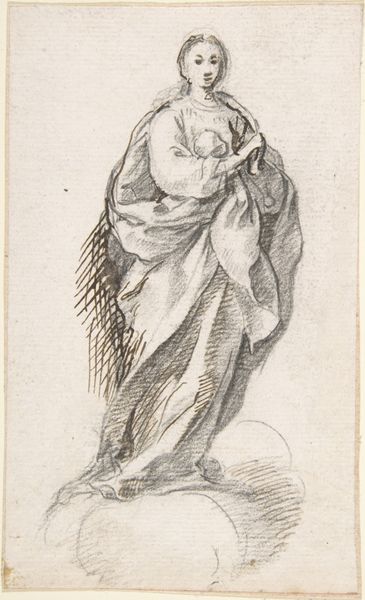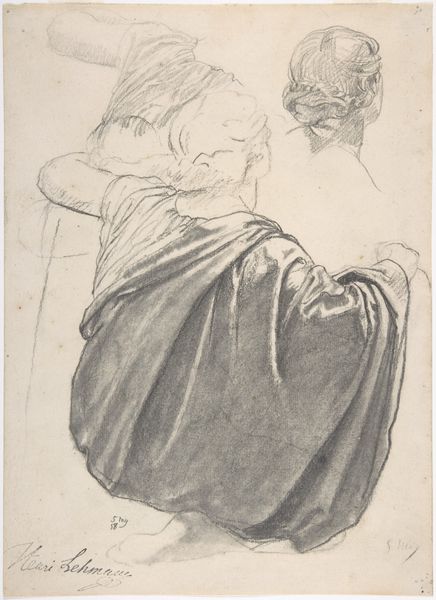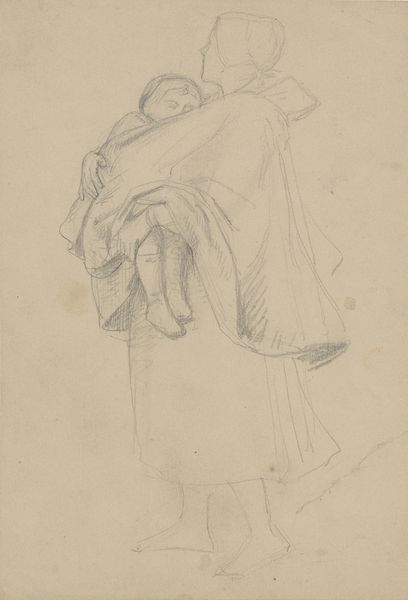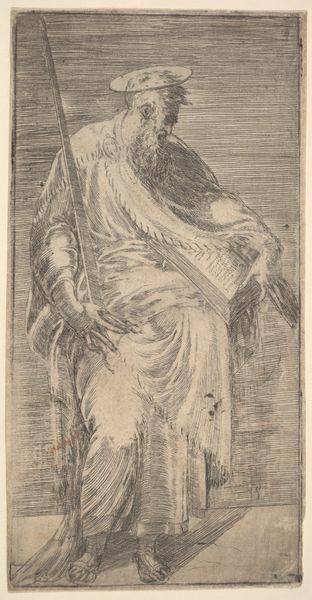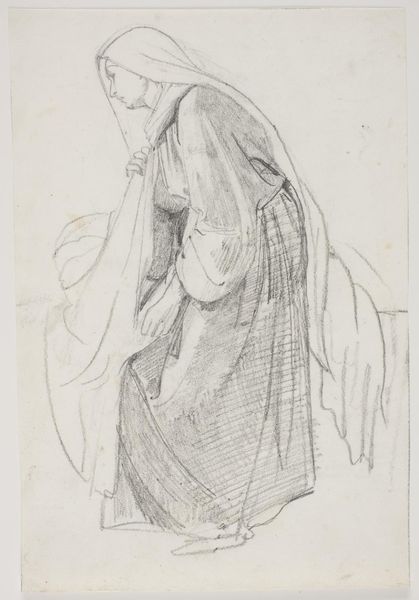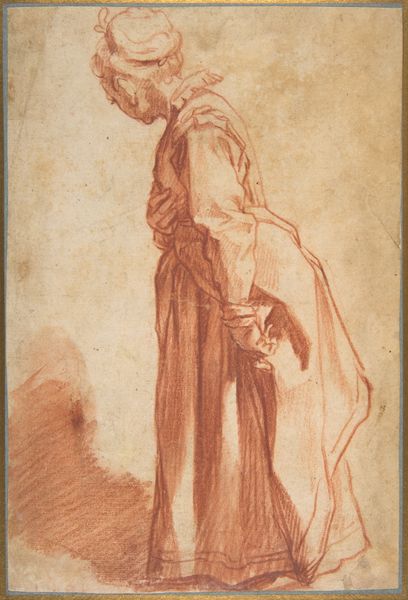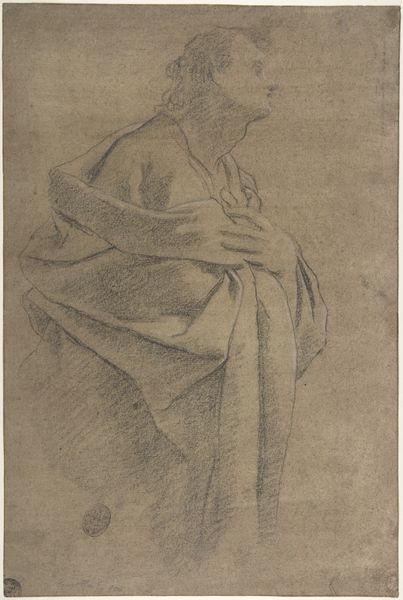
drawing, print, pencil
#
portrait
#
drawing
# print
#
pencil sketch
#
figuration
#
pencil
#
academic-art
Dimensions: 11 13/16 x 8 11/16 in. (30 x 22.1 cm)
Copyright: Public Domain
Curator: Henri Lehmann’s pencil drawing, dating back to 1859, is titled "Back View of a Male Figure Wearing a Cloak," and it's currently housed at The Met. Editor: Immediately, I'm struck by a sense of melancholy, almost isolation. The shrouded figures create a strong feeling of anonymity and distance. Curator: Lehmann was deeply involved with the academic art tradition. Drawings such as this provided the vital underpinnings for history painting, where clothing signified virtue or, conversely, disguise. These figures remind me of mourners in ancient Greek or Roman tragedies. It feels imbued with the weight of classical narrative. Editor: And yet, there’s a certain vulnerability in the exposed nape of the neck of the central figure. It subtly undermines the sense of power you might expect from such draped figures, evoking a quiet introspection, as though shielding oneself from judgment. It is an interesting statement about masculinity and personhood at this historical juncture. Curator: Exactly. Clothing functioned as a semiotic system; Lehmann uses drapery to explore both individual character and its cultural performance. The multiple figures amplify this—each rendering a slightly different take on this visual language, yet the overall impression is unified and, dare I say, iconic. Editor: The stark contrast and the heavy shading of the fabric really enhance the emotional gravity of the scene. I also appreciate the visible marks of the creative process. This isn’t just a study of form; it exposes the very labor of artistic creation. It brings to the forefront of what a history painting of this time would symbolize about class. Curator: Indeed. These echoes are profound. It is through renderings like this, the slow revealing of symbolic weight, that we come to better appreciate not just art, but the civilizations it both reflects and shapes. Editor: Yes, and by situating Lehmann’s study in the broader context of the time period, we may better discern not only this pencil rendering, but how ideas regarding morality and propriety intersect here as well.
Comments
No comments
Be the first to comment and join the conversation on the ultimate creative platform.
